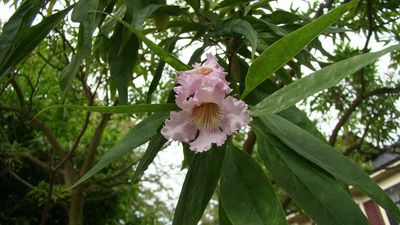Chitalpa Information
Chitalpa trees (x Chitalpa tashkentensis) can grow into 30 foot tall trees (9 m.) or as large, multi-stemmed shrubs. They are deciduous and lose leaves in winter. Their leaves are elliptical, and in terms of shape, they are about at the halfway point between the narrow leaves of desert willow and the heart-shaped foliage of catalpa. The pink chitalpa flowers look like catalpa blossoms but smaller. They are trumpet shaped and grow in erect clusters. The flowers appear in spring and summer in various shades of pink. According to chitalpa information, these trees are quite drought tolerant. This is not surprising considering that its native habitat is the desert lands of Texas, California, and Mexico. Chitalpa trees can live 150 years.
How to Grow Chitalpa
If you want to know how to grow chitalpa, first consider hardiness zones. Chitalpa trees thrive in U.S. Department of Agriculture plant hardiness zones 6 through 9. For best results, start growing chitalpa in a full sun location in soil with excellent drainage. These plants tolerate some shade, but they develop foliage diseases that make the plant unattractive. However, their trunks are very sensitive to sunscald, so they should never be sited with a western exposure where reflected radiation will burn them badly. You will also find that the trees are tolerant of high alkaline soils.
Chitalpa Tree Care
Although chitalpas are drought tolerant, they grow best with occasional water. Those growing chitalpas should consider irrigation during the dry season a part of the tree’s care. Consider pruning an essential part of chitalpa tree care too. You’ll want to carefully thin and head back lateral branches. This will increase the density of the canopy and make the tree more attractive.
